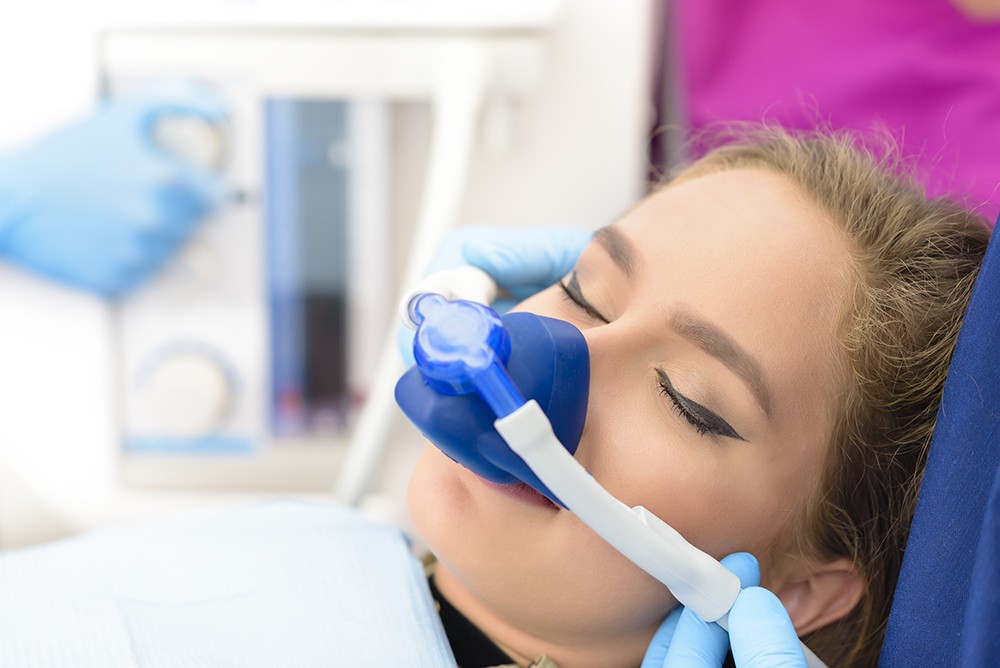Blog
Dental hygiene tips for healthy teeth & gums

What is Sedation Dentistry?
Sedation is a process which aims at reducing irritability or pain during a medical procedure by administration of sedative drugs. Examples of drugs that are generally used for sedation include etomidate, isoflurane, propofol, ketamine, midazolam, lorazepam and fentanyl.
Sedation is typically used in minor surgical procedures such as endoscopy, vasectomy, or dentistry and for reconstructive surgery, some cosmetic surgeries, removal of wisdom teeth, or for high-anxiety patients.
Methods of Sedation used in Dentistry
Sedation methods in dentistry include in halation or inhaled minimal sedation (using nitrous oxide), oral sedation, and intravenous (IV) sedation. Inhalation sedation is also sometimes referred to asrelative analgesia.
- Inhaled minimal sedation. Here, you are made to breathe nitrous oxide — also known as “laughing gas” — combined with oxygen through a mask that is placed over your nose. This gas has a soothing effect. The amount of sedation you receive is controllable by your dentist, and the gas tends to wane quickly. This is the only form of sedation where you may be able to drive yourself home after the procedure.
- Oral sedation. Depending on the size of dose given, oral sedation ranges from minimal to moderate. For minimal sedation, a pill is given. Typically, the pill is Halcion, a member of the same drug family as Valium. It is usually taken an hour before the procedure. The pill makes you drowsy, although you are still be awake. A larger dose may be given to produce moderate sedation. This type of anesthesia is the most common associated sedation used in dentistry. Some people become dizzy enough from moderate oral sedation to actually fall asleep during the procedure. Though a gentle shake can be enough to awake them.
- Intravenous (IV) moderate sedation. Under this method you are given the sedative drug through a vein, so it works faster. This method allows the dentist to continually adjust the level of sedation.
- Deep sedation and general anesthesia. You will be given medications because of which you will either be almost unconscious or totally unconscious — deeply asleep — during the dental procedure. While you are under general anesthesia, you cannot easily be awakened until the effects of the anesthesia wane away or are reversed with medication.
Irrespective of which type of sedation you receive, you’ll also typically need a local anesthetic — numbing medication at the site where the dentist is working in the mouth — to relieve pain if the procedure causes any discomfort.
Can any dentist perform sedation?
Most dentists can prescribe or administer minimal sedation (such as nitrous oxide or pills). An increasing number of dentists are authorized to give moderate sedation. However, only a fraction of dentists who have completed the Commission on Dental Accreditation (CODA) program in deep sedation and general anesthesia have the authority to use more complex techniques. These dentists are typically oral and maxillofacial surgeons and dentist anesthesiologists. Some dentists use a dentist anesthesiologist, who is specially trained to give all levels of sedation and anesthesia to both children and adults.
Each state’s dental board carefully regulates the use of sedation techniques. Many states require dentists to hold permits in order to perform sedation.
How safe is ‘Sedation Dentistry’?
Element of risk is always involved in getting anesthesia. But that risk is countered to a great deal when given by experienced dentists. However, certain people, like those who are suffering from obesity or who have obstructive sleep apnea are more likely to develop complications from the anesthesia. Thus, they should take extra precaution and should obtain green signal from their doctor before going for sedation.
It is important to ensure that your dentist is well qualified and adequately trained to prescribe the type of sedation you will be receiving. A smart patient should ensure that the below written things are followed:
- Prior to initiate the procedure, your dentist should go through your medical history and ask about any medications you’re currently on. This makes his judgement better to understand whether you are an appropriate candidate for sedation or not.
- You have every right to ask questions like what amount of dose of the sedative is appropriate for your health and age. You should also ensure that the dose is within the limits as recommended by the FDA.
- You should be confident about the credentials of the dentist. It’s advisable to learn how much training the dentist has got and how many procedures he or she has performed using sedation. Such information about the dental practitioner is very important for you to form trust in him.
- The doctor is supposed to provide you a form detailing the risks of the procedure. Go through it carefully and ask your dentist about the points or jargon you feel ambiguous about.
- The procedure followed by the dentist should be compliant with the American Dental Association’s guidelines. The dentist should also have essentials like oxygen — artificial ventilation — and drugs that can reverse the effects of sedation if such a need arises.
Book Appointment to find out which treatment might be best for you.


